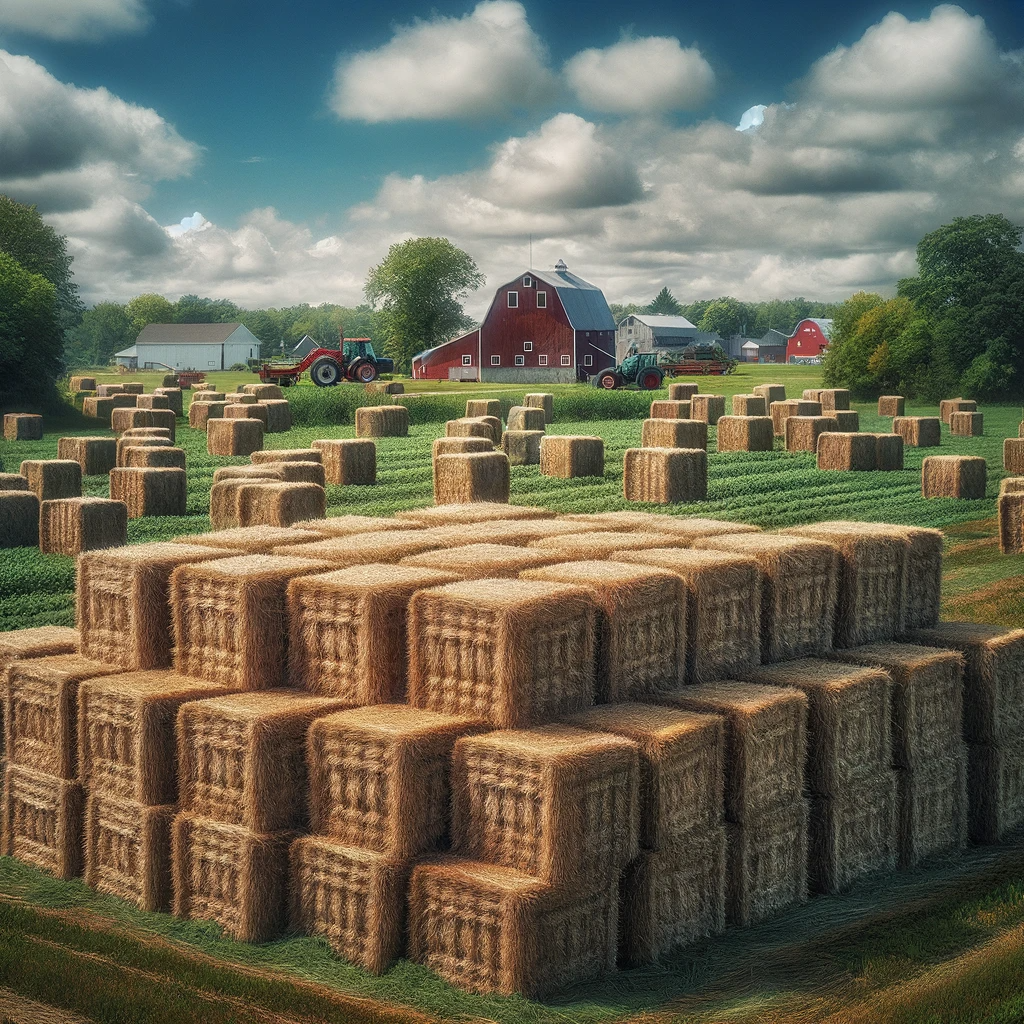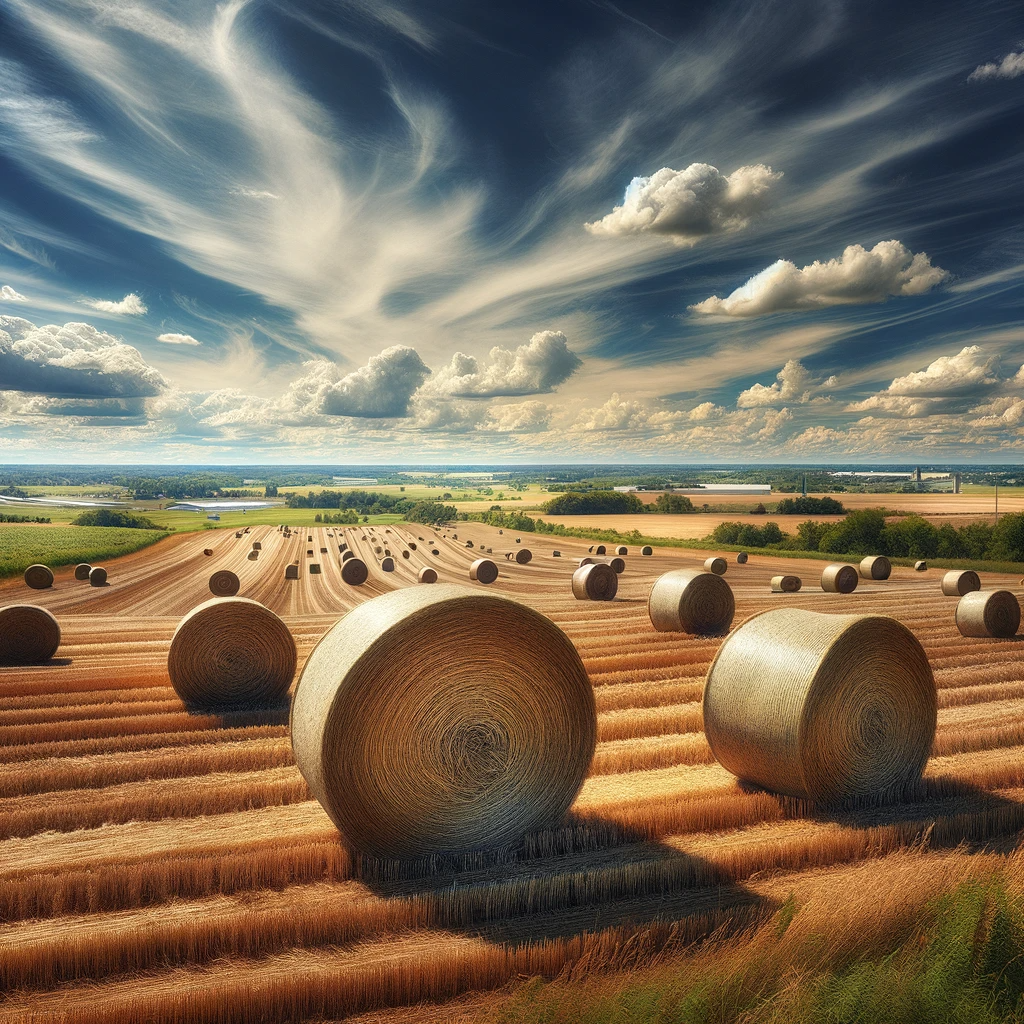Hay Bales Unveiled: Choosing the Best for Your Needs Around Ottawa
In the lush green landscapes surrounding Ottawa and surrounding towns, hay bales are more than just a picturesque element of rural scenery; they're a pivotal component of agricultural success. Whether you're a seasoned farmer or starting a hobby farm, understanding the nuances of hay bales is essential. This article delves into the world of hay bales, highlighting why certain types are preferred over others and providing insights into their pricing in the Ottawa region.
Hay bales, in their various forms, play a crucial role in feeding livestock and contributing to overall farm efficiency. The choice between square and round bales, while seemingly trivial, can significantly impact a farm's operations, from labor requirements to storage capabilities. Furthermore, factors like storage conditions and the timing of the cut can influence both the quality and the price of the hay. In Ottawa, where agriculture blends with the demands of modern farming, making an informed choice about hay bales can mean the difference between a thriving farm and a struggling one.
In the following sections, we'll explore the distinct advantages and costs associated with different types of hay bales, considering factors such as ease of handling, suitability for different types of livestock, and the impact of storage methods on quality and price. Whether you're concerned about the respiratory health of your animals, the sustainability of your farming practices, or the economic aspects of hay purchasing, this guide will provide you with the necessary information to make the best choices for your farm.
Square Hay Bales: Benefits and Pricing
The Advantages of Small Square Bales
In the pastoral regions around Ottawa, small square hay bales are highly favored, especially for farms concerned with the respiratory health of their animals. These bales, typically easier to manage and distribute, are ideal for smaller or hobby farm operations where manual feeding is prevalent. The compact size of square bales allows for more precise portion control, crucial for maintaining optimal animal health and efficient feed use. This precision plays a vital role in maximizing crop yield, as it ensures that the nutritional needs of livestock are met without excess waste.
Pricing and Availability in Ottawa
In Ottawa's diverse agricultural landscape, the cost of small square hay bales is influenced by several factors, including the season of harvest and the farm's proximity to urban centers. Generally, these bales are priced between $5 to $7 each, reflecting the labor-intensive process of their creation. The first cut of hay, typically richer in nutrients, might command a higher price, aligning with the goal of achieving the best crop yield.
Labor Considerations and Environmental Impact
The labor-intensive nature of producing square bales, though potentially more costly, aligns with sustainable practices often seen in organic farming. The process allows for more control over the baling operation, ensuring that each bale is of consistent quality and free from contaminants, a consideration critical in organic livestock and dairy farming.
Small square hay bales represent an excellent choice for Ottawa-area farmers who prioritize animal health, feed control, and sustainable practices. While their cost might be slightly higher due to labor requirements, the benefits they offer in terms of quality and environmental impact make them a worthy investment for many.

Round Hay Bales: Varieties and Cost Effectiveness
Understanding Round Hay Bales
Round hay bales, prevalent in the vast agricultural lands around Ottawa, offer a different set of advantages compared to their square counterparts. These bales, often larger and more suitable for extensive livestock operations or larger hobby farm setups, are known for their cost-effectiveness in terms of production and storage.
Size Variations and Pricing in Ottawa
The most common size for round hay bales in the Ottawa area is 4 feet by 5 feet, typically priced between $40 to $60. These bales are a practical choice for farmers who require large quantities of hay for their livestock due to their size and ease of mechanical handling. Smaller 4 feet by 4 feet bales can sometimes be found at around $20, offering a more affordable option for those with less storage space or smaller herds.
Storage Considerations and Impact on Price
The way round hay bales are stored – whether indoors or outdoors – significantly impacts their quality and, consequently, their price. Bales stored indoors are typically better preserved, leading to higher nutritional value and longer shelf life, important considerations for dairy farm operations. This storage factor is reflected in the pricing, with indoor-stored bales often fetching a higher price than those stored outdoors.
Seasonal Cuts and Bulk Discounts
In addition, the timing of the hay cut can influence the pricing of round bales. First cuts are generally more nutrient-rich, hence more desirable, especially for organic farming practices, and may command a higher price. Furthermore, purchasing hay in bulk often results in volume discounts, a beneficial aspect for larger operations.
Round hay bales in Ottawa offer a practical solution for larger-scale farming needs. Their varied sizes, storage methods, and seasonal cuts provide different price points and qualities, catering to the diverse requirements of Ottawa's farming community, from livestock care to dairy production.

Storage and Quality Impact on Price
The Importance of Proper Hay Storage
Proper storage of hay bales is a critical factor that significantly affects their quality and price, particularly in the diverse climatic conditions of the Ottawa region. Whether dealing with small square bales or larger round ones, how they are stored can make a substantial difference.
Indoor vs. Outdoor Storage
Hay bales stored indoors are generally of higher quality due to better protection from the elements. This is especially important for dairy farm operations where the quality of feed directly impacts milk production. Indoor storage preserves the nutritional value of the hay, prevents mold and rot, and reduces wastage. Consequently, such bales are often more expensive than those stored outside. On the other hand, outdoor-stored bales might be more affordable but come with the risk of exposure to weather, leading to potential quality degradation.
Quality Variations and Pricing
The quality of hay also varies with the season of the cut, affecting its price. Hay from the first cut generally has a higher nutrient content, making it more sought-after and expensive. This aspect is particularly crucial for organic farming practices, where the quality of feed plays a significant role in maintaining organic standards.
Balancing Cost and Quality for Various Farm Types
For hobby farm owners and large-scale livestock managers alike, balancing cost and quality when purchasing hay is essential. While indoor-stored, first-cut hay might be the premium choice, outdoor-stored or second-cut hay can be a cost-effective alternative, especially for larger operations where volume discounts can offset the lower quality.
Understanding the impact of storage and cut on the quality and price of hay bales is crucial for Ottawa-area farmers. Making informed decisions based on these factors can lead to better financial management and optimal animal health, regardless of the farm's size.

Bulk Purchasing and Seasonal Variations
Maximizing Savings with Bulk Purchases
In the agricultural world, particularly around Ottawa, bulk purchasing of hay bales can lead to significant savings. This is particularly true for larger livestock operations or expansive hobby farms. Buying in bulk often results in volume discounts, allowing farmers to reduce the per-unit cost of hay significantly. This approach not only helps in managing the budget but also ensures a steady supply of hay, especially during the winter months when feed is crucial.
Seasonal Cuts and Their Impact on Pricing
Hay bales, whether square or round, are subject to price variations based on the season of the cut. The first cut, typically occurring in late spring, is often richer in nutrients, making it highly desirable for feeding purposes, particularly in organic farming systems. As a result, first-cut hay usually commands a higher price in the market. The second cut, although still nutritious, is generally less dense and can be slightly more affordable.
Understanding Seasonal Demand and Supply
In regions like Ottawa, the demand for hay fluctuates with the seasons. During the growing season, the supply is usually abundant, potentially lowering prices. However, as winter approaches, the demand for hay increases, often driving up prices. This seasonal variation is an important consideration for dairy farm owners and other farmers as they plan their annual purchasing and budgeting.
Uunderstanding the dynamics of bulk purchasing and the seasonal variations in hay pricing is crucial for efficient farm management in Ottawa. By strategically planning hay purchases, farmers can optimize their expenses while ensuring high-quality feed for their animals throughout the year.

Navigating the hay market in Ottawa, ON, requires an understanding of the different types of hay bales, their benefits, and the various factors influencing their pricing. From small square bales preferred for their manageability and suitability for animal respiratory health, to larger round bales valued for their cost-effectiveness in large-scale operations, each type serves specific needs within the agricultural community.
The choice between indoor and outdoor storage, the timing of the hay cut, and the potential for bulk purchasing discounts are all crucial considerations. These factors not only affect the price but also the quality of the hay, impacting everything from livestock health to the sustainability of dairy farms and organic practices.
For hobby farm owners and large-scale agricultural producers alike, making informed decisions about hay purchases is key to maintaining a successful operation. Understanding the nuances of hay bales and their market in Ottawa allows farmers to optimize their expenses, ensure quality feed for their animals, and contribute to the sustainability of their farming practices.
As the agricultural landscape continues to evolve, staying informed and adaptable will remain essential for thriving in the dynamic world of farming in and around Ottawa.





